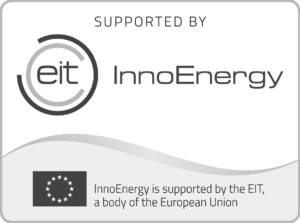29.08.2018
Wizelife: your digital guide to good health
Wizelife’s founders Kai Siinmaa and Mart Levo worked for pharmaceutical companies for over 15 years but then decided to go into the field of disease prevention. Their goal: to make knowledge available to give people the best chance to lead healthy lives and stay healthy.
Siinmaa and Levo insist that with precise information, people can also be helped via computer – patients with information pertaining specifically to them can do a great deal for their health. This was the inception of the first product that helps gauge health risks in real time: “The platform is individual based, so the risk for every individual is defined separately. Various typical health risks are evaluated, including the risk for cardiovascular diseases or diabetes and overall mortality. We are dealing with adding a population module to the platform, which means that family doctors will be able to find the 10-20% among their patients who have the highest health risk. Or, for instance, they will be able to seek out the people with the highest cardiovascular risk in the population at large to deal with them intensively,” said Siinmaa.
Siinmaa and Levo insist that with precise information, people can also be helped via computer – patients with information pertaining specifically to them can do a great deal for their health.
The platform’s target group includes ordinary people and health professionals. Wizelife.net has received over 70,000 visitors who have entered data on their lifestyle and risks. “By completing the test, people can see how their health changes when they change their user habits. They also develop an understanding of which factors comprise a health risk and how large a role a single component like blood pressure plays. This way, we can find people, no matter what their risk, and draw up action plans or prevention programmes and deal with them in a group-based manner. We determine 14 different risks, along with the overall mortality, which we express as a general risk. All of these risks can be gauged through questionnaires that people themselves complete,” she says.
In testing the site in the US, it tur-ned out that people of Hispanic origin and black patients were most interested. They felt that they had limited access to the health-care system and they perceived a benefit. Wizelife has been targeting English-speaking markets, so 86% of the patients in the prevention project were in the US. An important aspect in the product testing phase is how people are prepared to share their data online – the parties must have trust in data exchange.
Artificial intelligence helps make the leap from diagnostics to decision
Once a patient has entered data about health risks and their lifestyle, a doctor no longer needs to revisit these topics. “We do as much pre-interviewing of the patient as possible and perform all of the evaluations that we can – for instance, assessing how severe the phase of a given illness is or what the flare-up is like. This way, the doctor gets a complete overview before the patient steps into their office,” says Levo.
The subsequent developments in the website will be more for professionals who are looking for ways to productize it. “Prevention is a fascinating topic but people must have a real commitment if they expect serious results. As long as a person has no health problems, the patient’s only authority is the doctor, so we wanted to add the medical recommendation feature. We set the focus on the first tier. On one hand, people aren’t getting in to see doctors and secondly, the pressure on the first tier continues to grow,” says Levo.
“In the last year, we have been worked on developing artificial intelligence, which is above all aimed at helping general practitioners make a faster decision upon diagnosis. The programme we are currently working on covers 24 disease groups. That could cover around 80% of the cases general practitioners see,” says Levo. It is already planned to test the algorithms with patients, and cooperation agreements have been concluded with the University of Tartu Faculty of Medicine. Cooperation is also being pursued with the University of Tartu Institute of Computer Science.
“Our approaches to diseases are predicated on the best academic knowledge, and the best medical know-ledge about diagnostics are translated into code. It is a challenge in its own right to add medical experience to the code. While a medical education can be picked up from literature, doctors work a great deal on the basis of experience. They see how much a certain symptom predominates or what sort of cluster the symptoms comprise,” Siinmaa says.
“Our uniqueness lies in the fact that on one hand we deal with prevention but on the other hand there’s risk assessment and active diagnostics. Many companies who work in a similar field in Europe have gone the road of letting the patient diagnose their own illnesses. If a patient isn’t sure, they should still see a doctor and fee-charging platforms are coupled with this. That means that resources are increasingly moving from the state system to paid medical services. Our goal is to make the work of family doctors so much easier, to free up time for critical activities,” says Levo.
“The knowledge base is centred on testing and knowledge, and we build experience-based AI on top of that. If we add real data from real patients, the system will be able to learn just like a doctor learns in the course of their work, but much faster. This is a place where we can cooperate with universities,” says Levo. “There is currently a search for a partner who can help us take the next step with disease descriptions and case histories. This is a problem that all systems in medicine are facing. There’s a little information about patients, but there is also a lack of disease symptoms, conclusions and information about the treatment. Sometimes, the data are housed in different places and big data analysis isn’t possible,” says Levo.
Saving the doctor’s time generates value
“For doctors, the value lies in saving time on simpler cases – the patient has done the advance work and doesn’t need to make an appointment, so less time needs to be spent on them. This part is very important for doctors. We can help optimize the everyday work as much as possible. For that very reason, the first reactions from doctors have been positive. We always explain that atypical cases are ultimately the doctor’s domain and computers can’t solve complicated cases. On the contrary, computers can deal with tasks defined within clear limits,” says Levo.
The system will analyse all of the aspects pertaining to a patient, and the likelihood that the doctor will fail to notice something is lower. A sufficient number of patients ensures that the system has learning capability, so that rarer conditions can be recognized – ones that the GP may not have had experience with. In addition, the system performs several assessments simultaneously. For instance, it evaluates the severity of the illness and the need for medications. “We also consider it important that the system be able to display the logic on the basis of which it made its decision,” says Levo.
It’s planned for the system to be in testing at general medical practices by mid-June.












